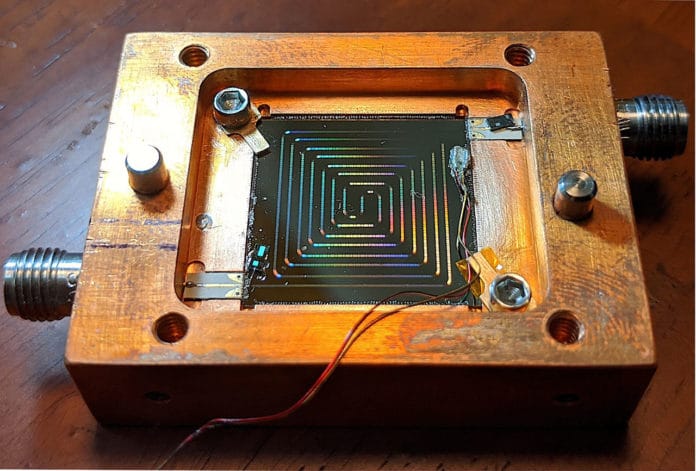Scientists at the National Institute of Standards and Technology (NIST) have devised a miniature superconducting thermometer that can measure temperatures below 1 Kelvin (minus 272.15 °C or minus 457.87 °F), down to 50 milliKelvin (mK) and potentially 5 mK. It can be used to monitor the temperature of processor chips in superconductor-based quantum computers, which must stay cold to work properly.
Unlike conventional cryogenic thermometers, this new superconducting thermometer is smaller, faster, and more convenient for chip-scale devices and mass-produced.
Only 2.5 by 1.15 millimeters in size, the new thermometer can be embedded in or stuck to another cryogenic microwave device to quantify its temperature when mounted on a chip. The analysts utilized the thermometer to show quick, precise measurements of a superconducting microwave amplifier’s heating.
Group leader Joel Ullom said, “This was a fun idea that quickly grew into something very helpful. The thermometer allows researchers to measure the temperature of a wide range of components in their test packages at minimal cost and without introducing many additional electrical connections. This has the potential to benefit researchers working in quantum computing or using low-temperature sensors in a wide range of fields.”
The thermometer is composed of a superconducting niobium resonator coated with silicon dioxide that later interacts with the resonator to shift the frequency at which it naturally vibrates. The interaction occurs because of atoms “tunneling” between two sites, a quantum-mechanical effect.
The thermometer takes about 5 milliseconds to measure the temperature. Additionally, it maps changes in frequency, as measured by electronics, to a temperature.
Journal Reference:
- J. Wheeler et al. Sub-kelvin thermometer for on-chip measurements of microwave devices utilizing two-level systems in superconducting microresonators, Applied Physics Letters (2020). DOI: 10.1063/5.0029351
